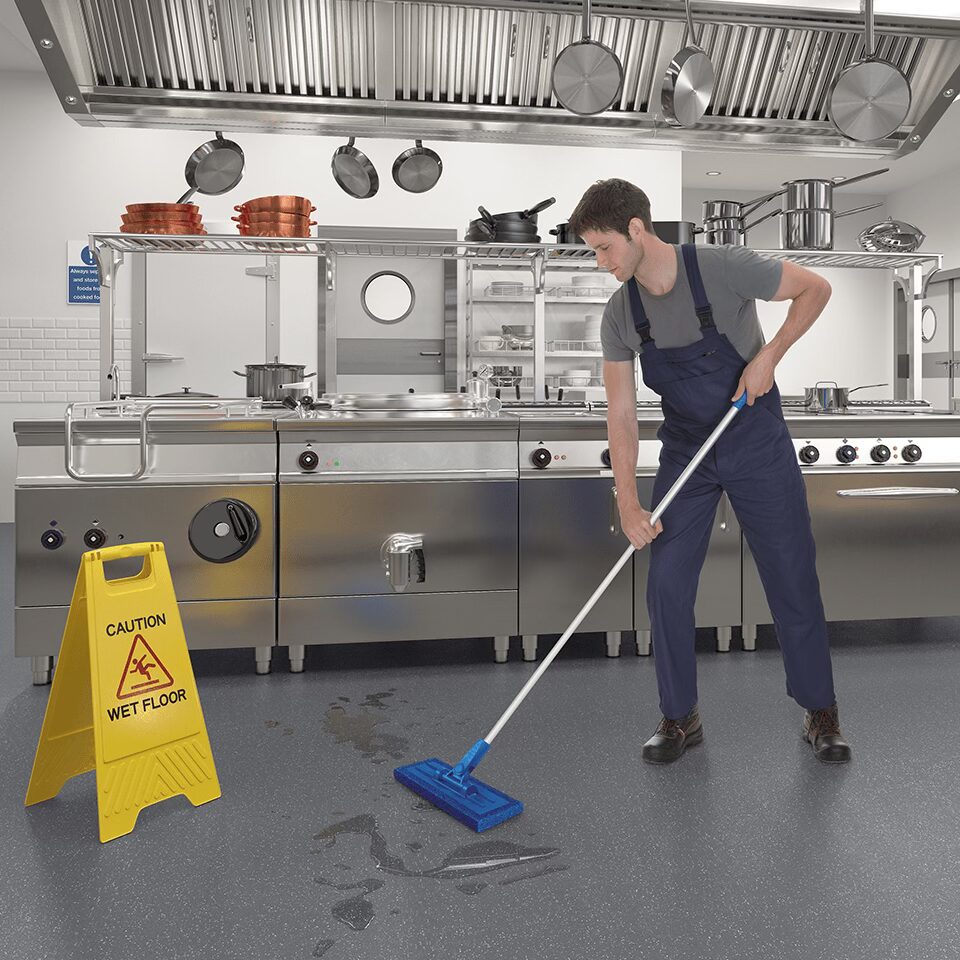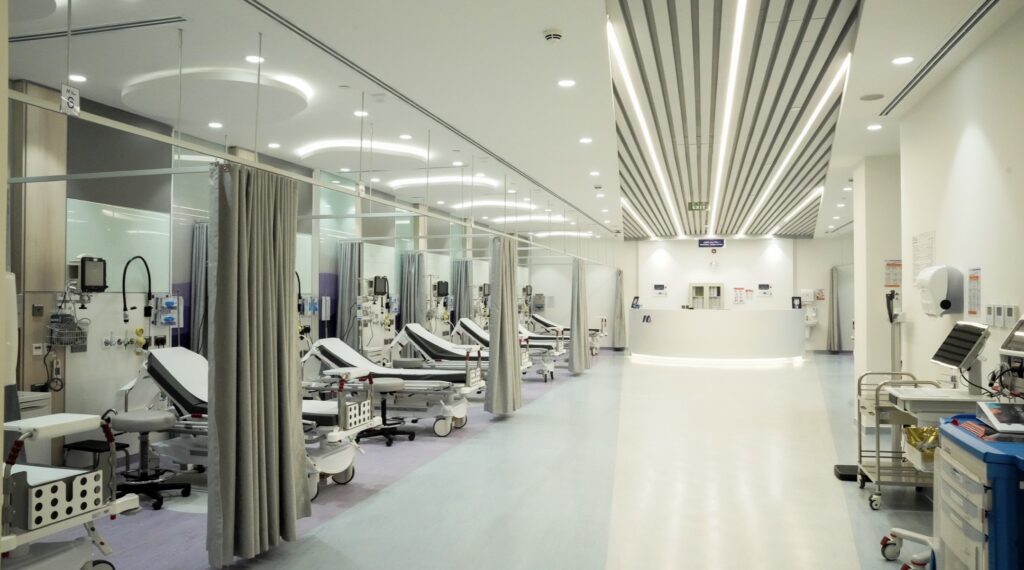Introduction
In hospital design, every detail matters to enhance safety and improve medical performance. Flooring is a critical component, playing a key role in operational health and safety.
While ceramic was the traditional choice for decades, modern hospitals worldwide now prefer advanced medical vinyl flooring — such as those offered by IDEAL FLOORS — due to its ease of cleaning, ideal disinfection, movement comfort, slip resistance, and other key advantages.
1. Hygiene and Disinfection

Medical vinyl flooring is manufactured using homogeneous PVC technology, creating a seamless surface free from gaps. This prevents dirt and bacteria buildup, making it the ideal choice for operating rooms, labs, and sensitive hospital corridors.
In contrast, ceramic flooring has joints and grout lines that can absorb moisture, creating an environment for germs to multiply, and making cleaning and disinfection less effective.
Conclusion: Vinyl ensures a clean and sterile environment, essential for modern healthcare facilities.
2. Slip Resistance and Safe Movement

High-traffic hospital areas demand maximum safety.
- Vinyl flooring offers global anti-slip ratings such as R9/R10, providing stability and reducing slip risks.
- Ceramic, on the other hand, can become slippery when wet, increasing accident risks.
Vinyl is thus the preferred option for operating rooms and busy medical corridors.
3. Acoustic and Thermal Comfort
Vinyl absorbs sound and reduces echoes, creating a quiet and comfortable environment for patients and staff.
It also maintains balanced indoor temperatures, unlike cold ceramic tiles. This makes vinyl ideal for wards and internal corridors, where both acoustic comfort and thermal comfort are essential.
4. Technical Safety and ESD Protection

Operating rooms and laboratories use sensitive medical equipment that can be affected by static electricity.
- ESD (Electrostatic Discharge) medical vinyl provides a safe electric discharge system according to IEC and ISO standards.
- Ceramic does not provide any static protection, making it less suitable for sensitive technical areas.
5. Maintenance and Long-Term Cost
While ceramic may appear cheaper initially, maintenance and replacement costs are high. Even minor damage often requires replacing a full tile section.
- Vinyl flooring is easy to clean, quick to install, and damaged areas can be heat-welded without replacing the whole floor.
- Modern PU or PUR layers reduce the need for frequent polishing, extending flooring life and lowering long-term costs.
6. Environmental and Health Compliance
Medical vinyl flooring from IDEAL FLOORS (UK) meets international health and environmental standards, ensuring safe air quality and low emissions.
Ceramic often lacks these certifications, making vinyl the superior choice for hospitals worldwide.
Comparison Table: Vinyl vs. Ceramic
| Feature | Medical Vinyl Flooring | Ceramic Flooring |
| Hygiene & Disinfection | Homogeneous surface, anti-bacterial | Gaps and joints accumulate germs |
| Slip Resistance | R9/R10 slip-resistant | Slippery when wet |
| Acoustic & Thermal Comfort | Absorbs sound, balanced temperature | Echoes, cold surface |
| ESD Safety | Anti-static medical vinyl | Non-conductive, no protection |
| Maintenance & Cost | Easy, heat-weldable, long-lasting | Expensive, difficult repair |
| Environmental Compliance | Certified, safe emissions | Often uncertified |
Conclusion
Choosing medical vinyl flooring over ceramic is a strategic decision for patient safety, staff comfort, and operational efficiency.
From anti-bacterial and slip resistance, to ESD safety and ease of cleaning, vinyl combines aesthetic appeal, durability, and comfort.
With IDEAL FLOORS, you can obtain fully certified medical vinyl flooring that ensures every step in the hospital is safe, hygienic, and comfortable.


